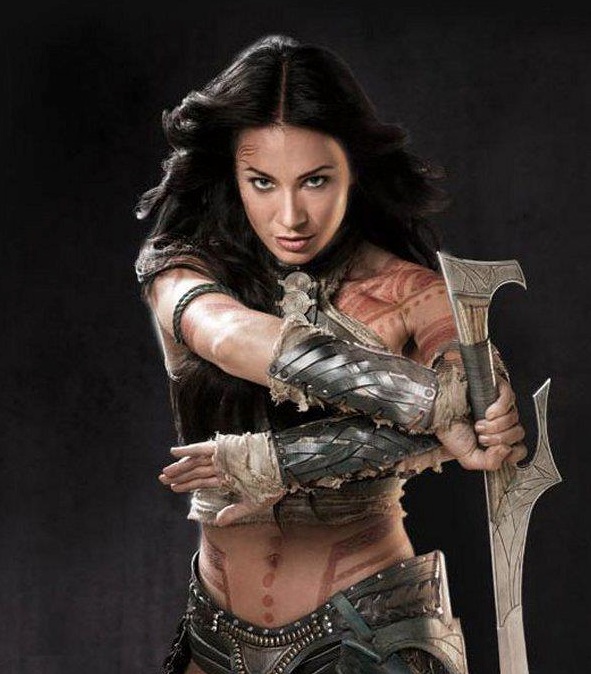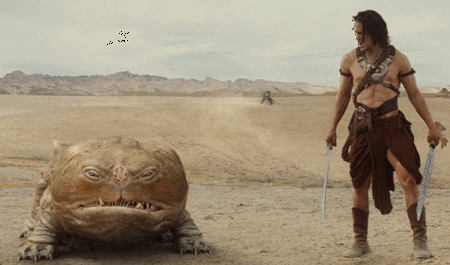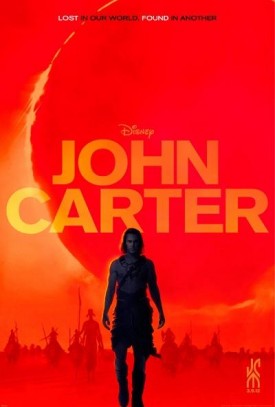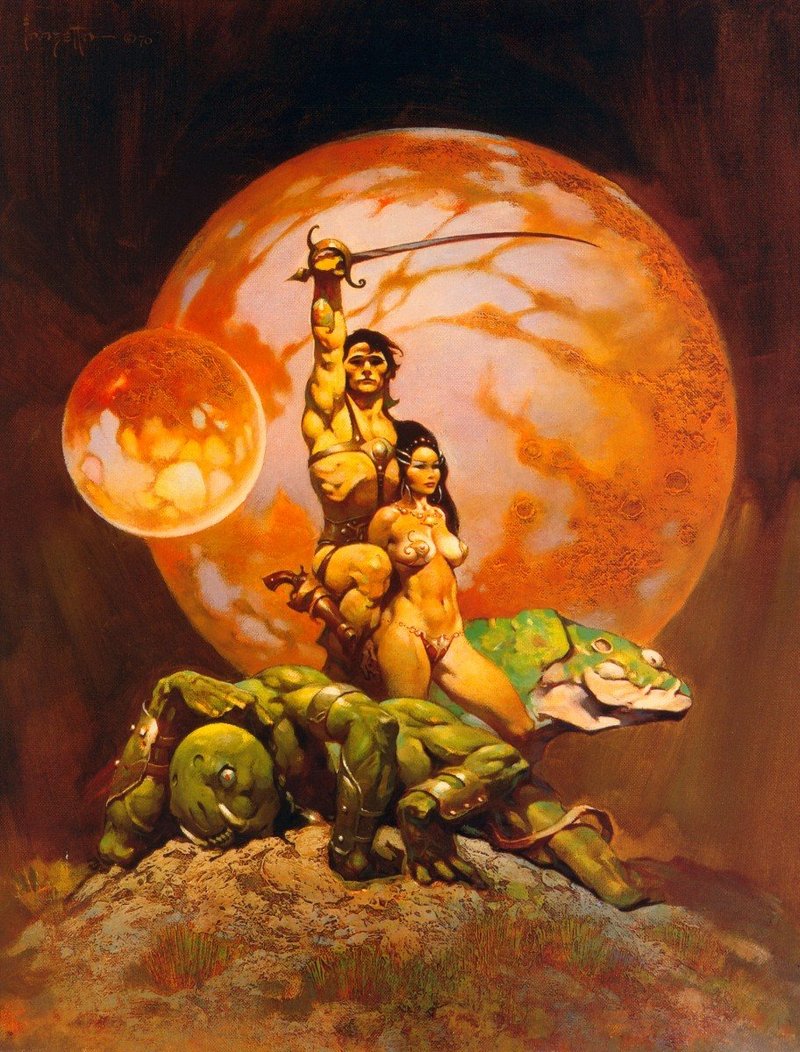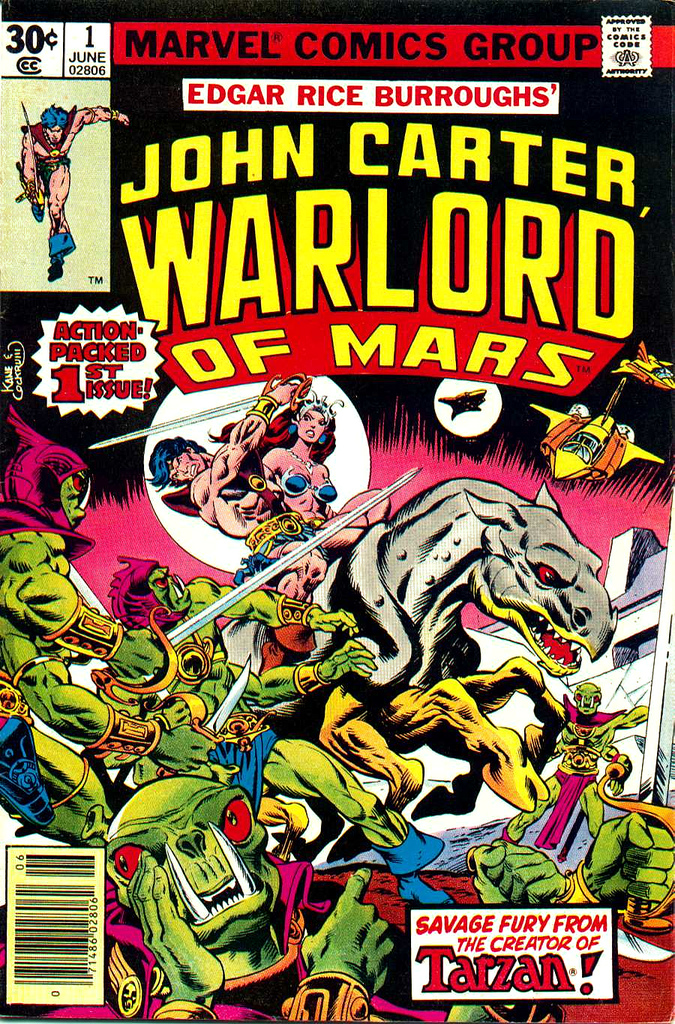|
|
|
Movie Review |
|
Lynn Collins as
the sword-wielding, butt-kicking Dejah Thoris
from the John Carter
movie In this, the 100th anniversary of the first
publication of Edgar Rice Burroughs' "Mars
Series" of stories and novels, Disney released
the John Carter movie on March 9, 2012. The
following review does contain movie spoilers,
but, as the spoilers are like a green-skinned,
four-armed, 15-ft. tall Thark or Warhoon, you
will notice the spoiler alert before you
approach them. I first encountered the John
Carter/Mars/Barsoom books by Edgar Rice
Burroughs through a series of paperback books I
read when I was a kid. My father and grandfather
had read them (in hardback), much earlier, and
encouraged me to check out this exciting
science-fiction series. The Mars books were
action-packed, filled with strange aliens,
endangered princesses, and horrible monsters
that always seemed to be in the way of our hero,
John Carter, and his gigantic, green-skinned
friend, Tars Tarkas. When I first heard that
Disney was making a feature film based on the
Mars books, I was both excited and worried. Why
worried? Well, sometimes when an established
story or character gets the "Disney Treatment,"
something vital is lost. Also, as a fan of the
original stories, I worried that in adapting it
for the big screen, the writers and the director
would think they could improve on the "original
source code" of the Burroughs books, thereby
totally screwing things up. These concerns entered my head as I sat down
for a 9:30 PM showing of John
Carter in the local multiplex with a
collection of fellow geeks to check out the
action. My worries immediately shot up as I saw
that the opening sequence of the film had no
recognizable corollary to anything from the
first Mars book. (BTW: I decided to re-read the
first book in the series, "A Princess of Mars,"
digitally, in preparation for seeing the movie).
Ok, it had air ships from Helium and Zodanga,
two of the battling Martian city-states from the
books, but that was the only part I recognized.
The movie creators obviously employed a plot
device to explain part of the back story, and
introduced some, ah, shall we say, new
characters and technology that I did not
recognize from A Princess of Mars. (Possible
Spoiler: The "new character," or at least the
Martian "race" he belongs to, does appear in
second book in the Mars Series, though the movie
version is somewhat different than in the
novels). John Carter Movie
Poster After the aforementioned opening sequence,
the movie settled into an introduction of John
Carter in 19th Century America, as in the book,
with a few changes in the story, but nothing
that screamed of dire illogic or Barsoomian
blasphemy. (Intentionally not giving too much
away here, my dear Spoiler-phobics). The manner in which our titular hero is
transported to Mars is different from the book
version, but in a way, it makes more sense than
the original written version. Surprisingly, this
difference, while providing an alternate
explanation of John Carter's arrival on Mars, is
somewhat logical, at least to those used to the
technological. When our hero arrives on Mars, a rather
humorous scene ensues in which Carter, as a
human from a world with a more powerful
gravitational pull, has to re-learn how to walk.
As in the book, his denser Earth-born bones and
strong muscles enable him to leap great
distances. (Note: It is believed by some that
the original Superman's ability to "leap tall
building in a single bound" originated with the
abilities of John Carter, who first appeared in
print some 27 years prior to Superman's
publication). As in the books, Carter encounters
Tars Tarkas and the Green Men of Mars, is
captured, and then becomes a sort of hero among
the Tharks. The special effects and set designs
for the movie are very true to the essence of
the original story, as are all the Barsoomian
creatures John Carter encounters in his
travails. The battle scenes are exceptional, from the
air-ship combat between the fleets of Helium and
Zodanga, to the ground combat involving the
Green Men. The cities of Zodanga and Helium are
well-designed, as are the costumes and uniforms
of the denizens of those cities. The character of Dejah Thoris, who is,
literally, the Princess of Mars, is very
well-played by Lynn
Collins, who transforms the literary
character from a damsel in distress stereotype,
to a sword-wielding scientist-warrior who kicks
butt with the best of them. Being a Disney
movie, Dejah Thoris and other female characters
are more suitably clothed than in the novels or
in the comic books. (In print, the female
Barsoomians are nearly naked, especially in the
cover art of Frank Frazzetta). It should also be
pointed out, that as John Carter in some ways
was a precursor to Superman,
Dejah Thoris, at least as imagined by Frank
Frazzetta, served as a model for the Princess
Leia Slave-Girl costume from Star Wars. John Carter of
Mars Art by Frank
Frazzetta An interesting side-note to the movie, is
that there appears to be some allegory
related to Christian themes and metaphors. I
frankly did not notice until I read an article
on it the next day, but then it seemed quite
obvious. At the end of the film, the movie title
appears, then part of it fades away, leaving the
initials of our hero, the savior of Mars. Those
letters, of course, being JC. The article points
out the fact that (Spoiler Alert), John Carter
dies, is placed into a tomb which can only be
opened from the inside, (supposedly), and when
the tomb is opened, the body is gone. Then he
appears again to finish his work. Hmmm, I think
I know that story! As in many novels and written
works, inserting some type of Christ allegory is
a common literary device. Overall, this was a fun movie to see. The
John Carter of the books is recognizable in the
John Carter of the movie. The costumes, set
designs, characterizations, and special effects
are all very well-done. The acting by Taylor
Kitsch and Lynn Collins, along with all the
others, is solid. The action scenes are good,
and there are several instances of humor
sprinkled throughout the move. The play on the
name of Carter's home state on Earth (Virginia)
is a well-written and well-delivered running gag
throughout the film. I look forward to the
sequel. "John Carter" and all fictional characters mentioned on this page are the property of the Disney Corporation. "The History Guy" is a Registered Trademark. |
John Carter of Mars
Trailer John Carter
of Mars Character Poll Historyguy.com Search
Engine
|
